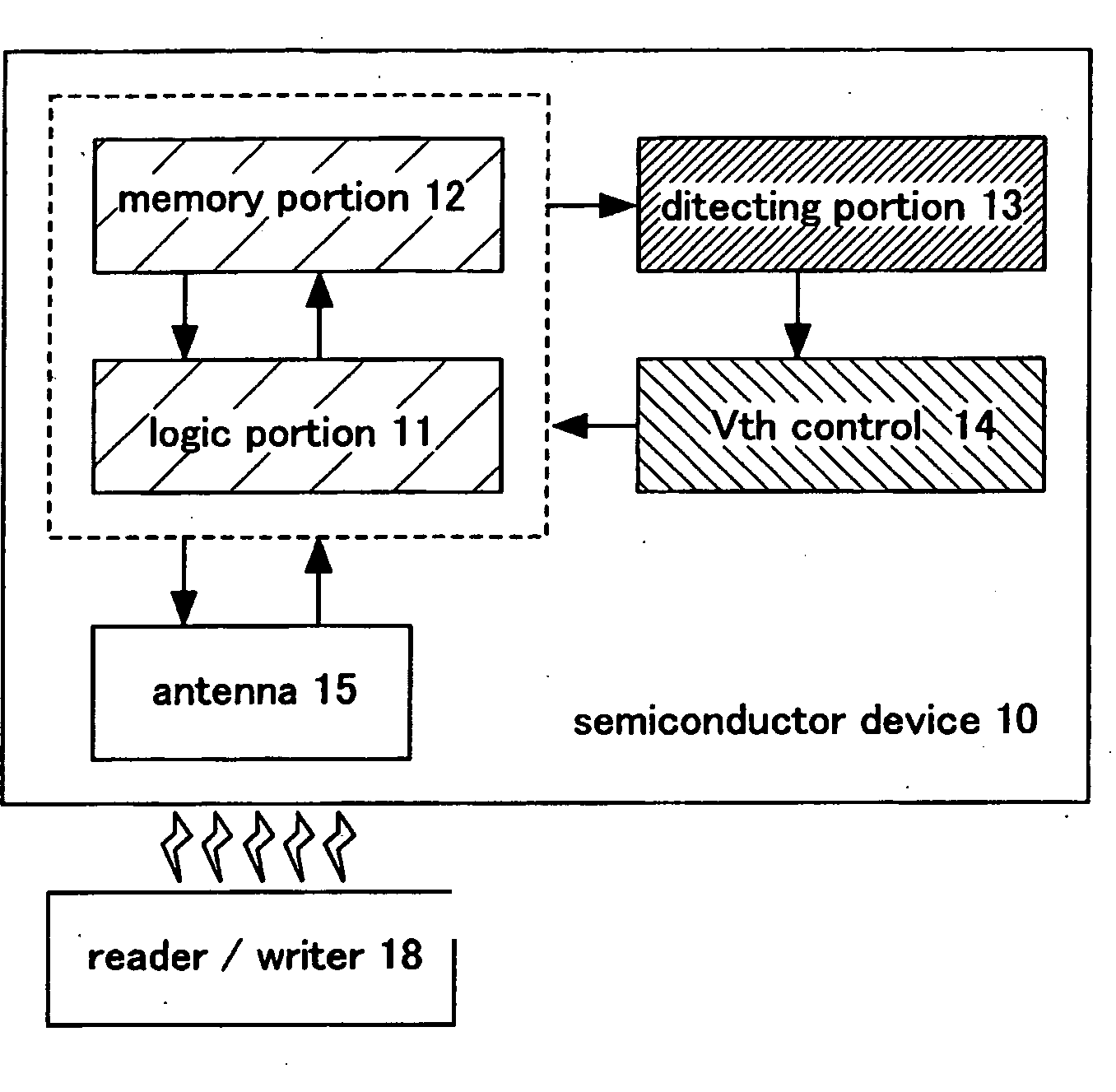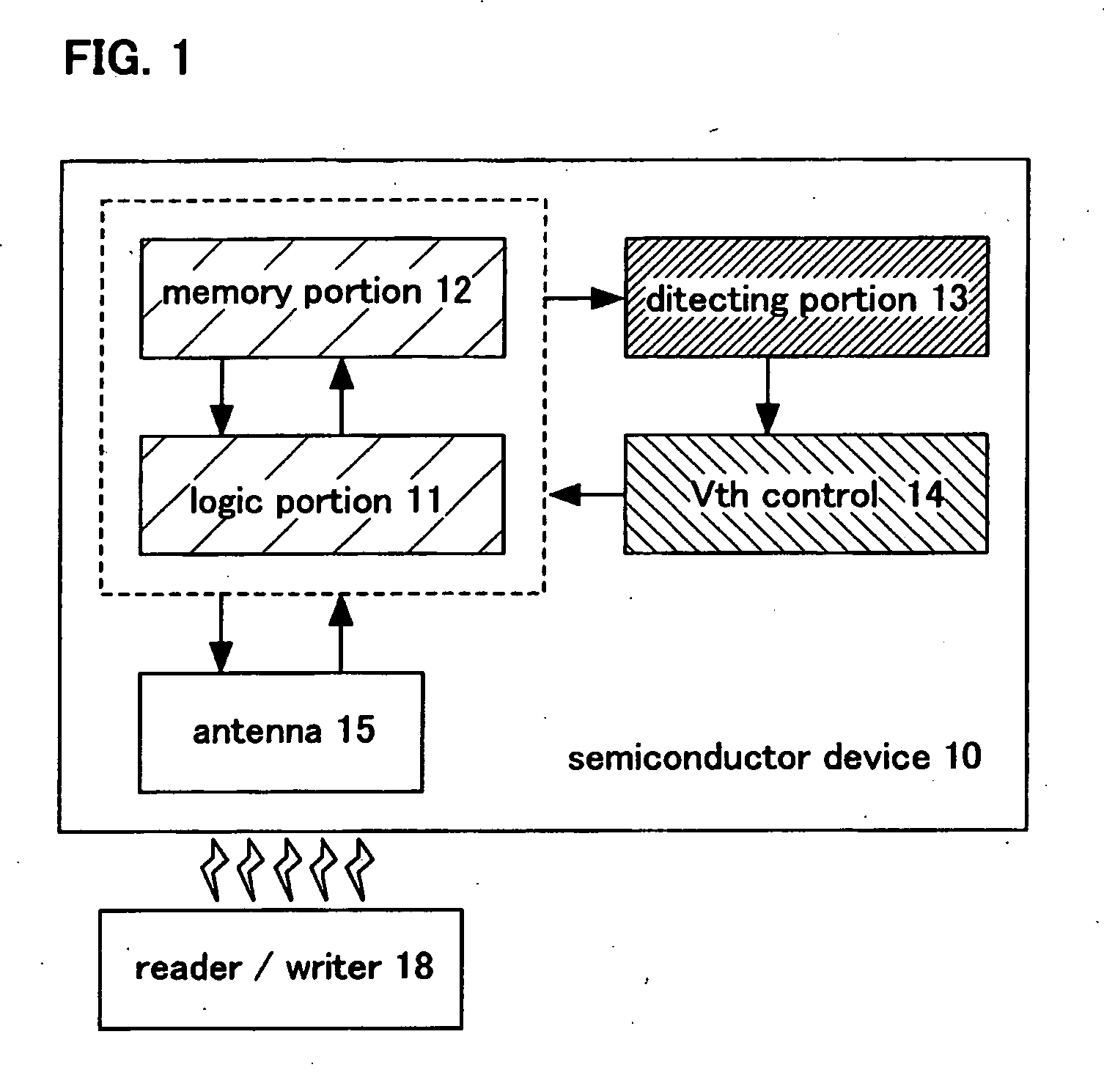Semiconductor Device
- Summary
- Abstract
- Description
- Claims
- Application Information
AI Technical Summary
Benefits of technology
Problems solved by technology
Method used
Image
Examples
embodiment 1
[0033]Constitution of the operation-frequency detecting means and the discriminating means in the detecting portion 13 is described using FIGS. 4A and 4B. The operation-frequency detecting means includes an address comparator 71, an address memory 72, a counter 73, and a reset signal generating circuit 74. The discriminating means includes a discriminating circuit 75 and a discriminating reference data memory 76.
[0034]The address comparator 71 is connected to an address bus 70 and the address memory 72. First address data is input from the address bus 70. The first address data and second address data which is input to the address memory 72 are compared with each other by the address comparator 71. When the first address data and the second address data agree with each other, a signal showing the agreement is output to the counter 73. The counter 73 counts an output of the address comparator 71. The reset signal generating circuit 74 outputs a reset signal periodically to the counte...
embodiment 2
[0042]Constitution of the logic portion 11, which is one of the above-mentioned five components of the invention (the logic portion 11, the memory portion 12, the detecting portion 13, the Vth control 14, and the antenna 15), is described in detail using FIG. 5. A semiconductor device corresponding to a CPU is illustrated for description here.
[0043]The semiconductor device corresponding to a CPU comprises a timing control 51, an instruction decoder 52, a register array 53, an address logic and buffer 54, a data bus interface 55, an ALU (Arithmetic Logic Unit) 56, an instruction register 57, the detecting portion 13, and the Vth control 14. The timing control 51, for example, receives an instruction from the outside and converts it into data for the inside to transmit to another block, and provides an instruction of reading or writing of memory data, or the like to the outside depending on the inside operation. The instruction decoder 52 converts an outside instruction into an instru...
embodiment 3
[0045]According to a semiconductor device of the invention, data reading and data writing can be performed in a noncontact manner, and any one of data transmission methods can be employed which are generally classified into three methods, that is, an electromagnetic coupling method by which data communication is performed by mutual induction by a couple of coils being provided so as to face each other, an electromagnetic induction method by which data communication is performed by an induction electromagnetic field, and a radio wave method by which data communication is performed by utilizing radio waves. The antenna 15 for transmitting data is provided in two manners, that is, the case where the antenna 15 is provided over the substrate 20 having a plurality of transistors (see FIGS. 6A and 6C), and the case where a terminal portion is provided over the substrate 20 having a plurality of transistors and the antenna 15 is provided to connect to the terminal portion (see FIGS. 6B and...
PUM
 Login to View More
Login to View More Abstract
Description
Claims
Application Information
 Login to View More
Login to View More - R&D
- Intellectual Property
- Life Sciences
- Materials
- Tech Scout
- Unparalleled Data Quality
- Higher Quality Content
- 60% Fewer Hallucinations
Browse by: Latest US Patents, China's latest patents, Technical Efficacy Thesaurus, Application Domain, Technology Topic, Popular Technical Reports.
© 2025 PatSnap. All rights reserved.Legal|Privacy policy|Modern Slavery Act Transparency Statement|Sitemap|About US| Contact US: help@patsnap.com



